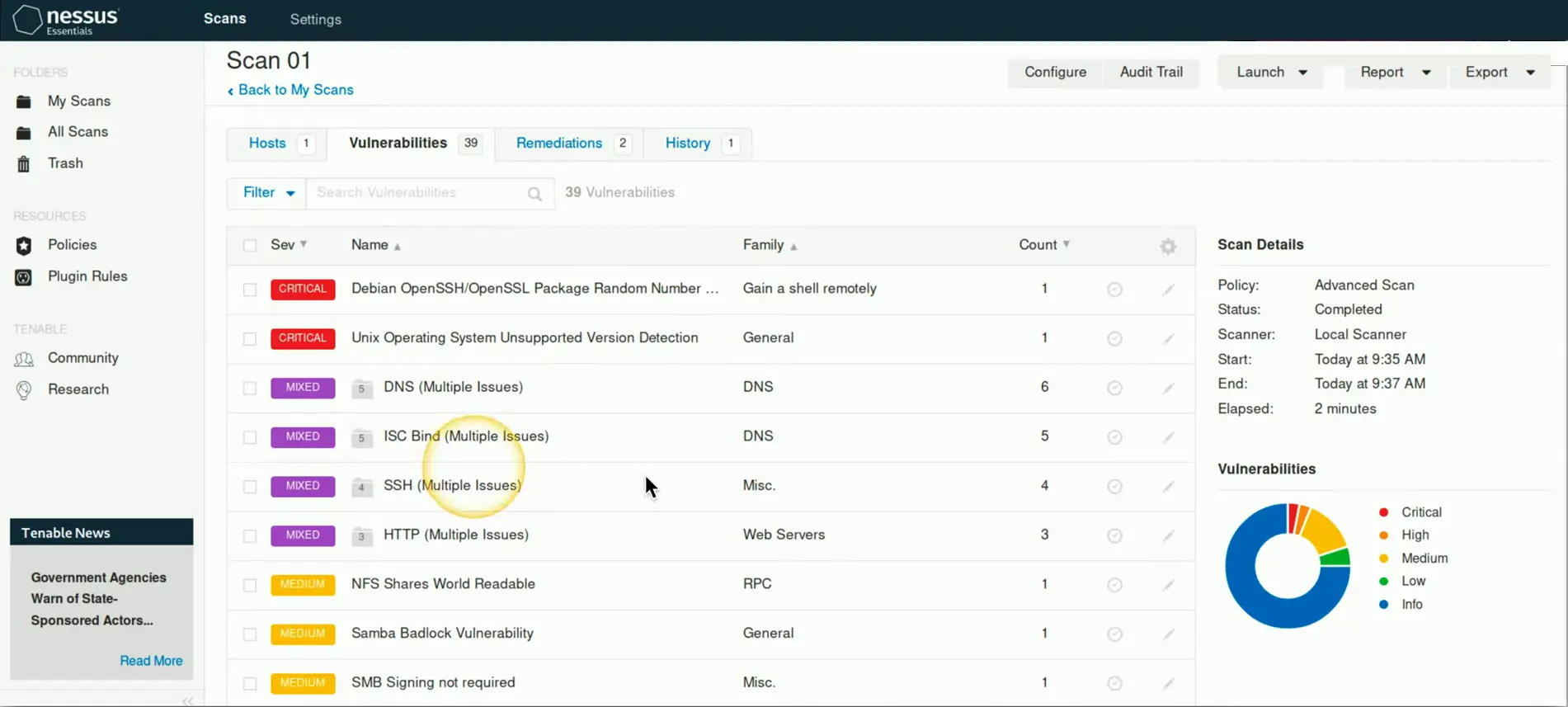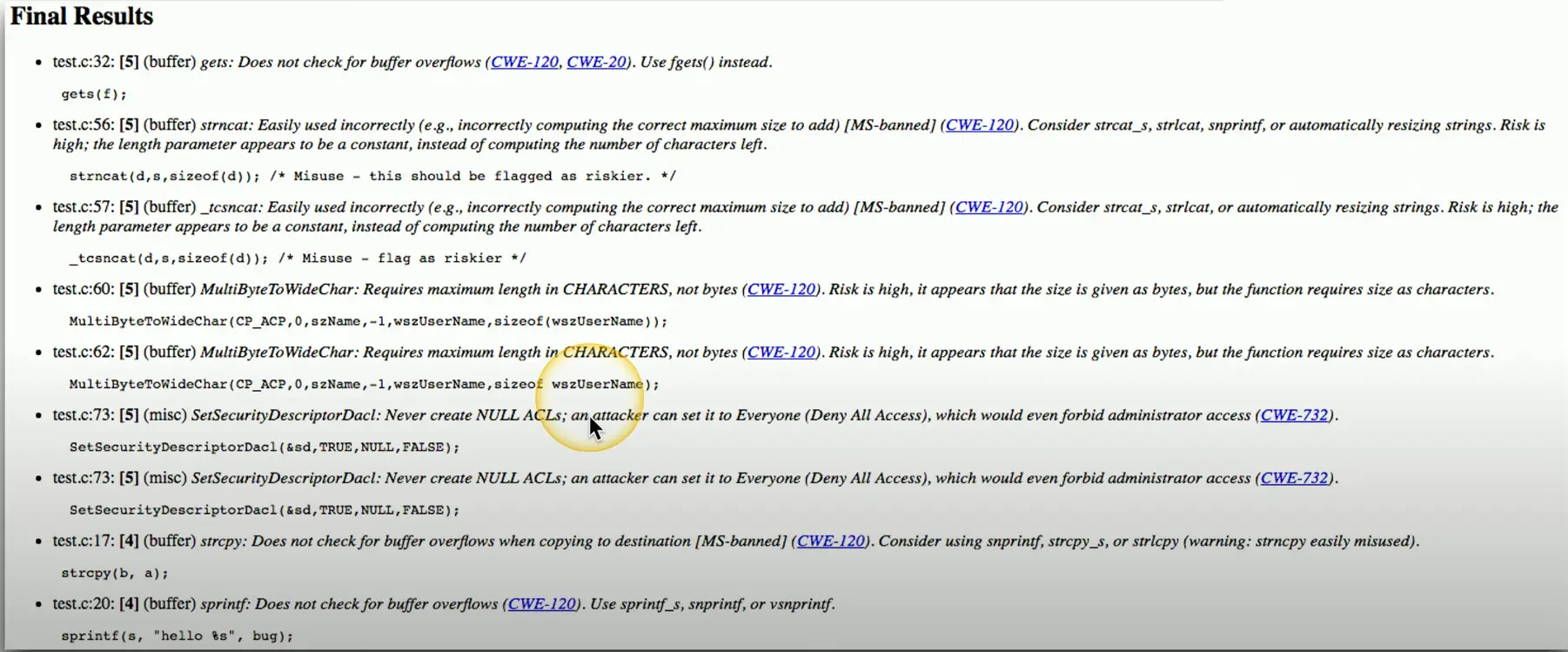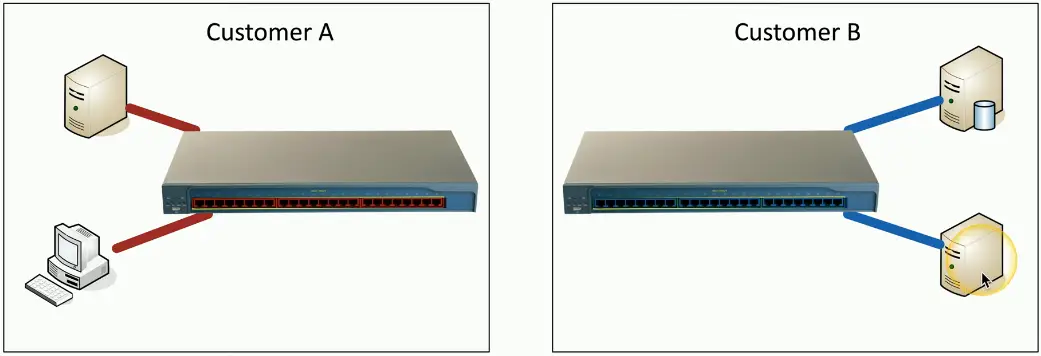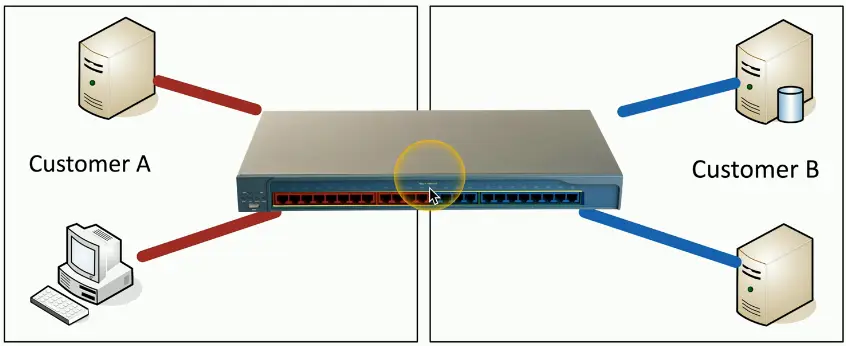Vulnerability Management
Vulnerability Scanning
Usually minimally invasive
- Unlike a penetration test
Port scan
- Poke around and see what’s open
Identify system
- And security devices
Test from the outside and inside
- Don’t dismiss insider threats
Gather as much information as possible
- We’ll separate wheat from chaff later
Static Code Analyzer
Static Application Security Testing (SAST)
- Help to identify security flaws
Many security vulnerabilities found easily
- Buffer overflows, database injections, etc.
Not everything can be identified through analysis
- Authentication security, insecure cryptography, etc.
- Don’t rely on automation for everything
Still have to verify each finding
- False positives are an issue
Dynamic Analysis (fuzzing)
Send random input to an application
- Fault-injecting, robustness testing, syntax testing, negative testing
Looking for something out of the ordinary
- Application crash, server error, exception
1988 class project at the University of Wisconsin
- “Operating System Utility Program Reliability”
- Professor Barton Miller
- The Fuzz Generator
Fuzzing Engines and Frameworks
Many fuzzing options
- Platform specific, language specific, etc.
Very time and processor resource heavy
- Many, many iterations to try
- Many fuzzing engines use high-probability tests
Carnegie Mellon Computer Emergency Response Team (CERT)
- CERT Basic Fuzzing Framework (BFF)
- https://professormesser.link/bff
Package Monitoring
Some applications are distributed in a package
- Especially open source
- Supply chain integrity
Confirm the package is legitimate
- Trusted source
- No added malware
- No embedded vulnerabilities
Confirm a safe package before deployment
- Verify the contents
Threat Intelligence
Research the threats
- And the threat actors
Data is everywhere
- Hacker group profiles, tools used by the attackers, and much more
Make decisions based on this intelligence
- Invest in the best prevention
Used by researchers, security operations teams, and others
Open-source Intelligence (OSINT)
Open-source
- Publicly available sources
- A good place to start
Internet
- Discussion groups, social media
Government data
- Mostly public hearings, reports, websites, etc.
Commercial data
- Maps, financial reports, databases
Proprietary/Third-party Intelligence
Someone else has already compiled the threat information
- You can buy it
Threat intelligence services
- Threat analysis
- Correlation across different data sources
Constant threat monitoring
- Identify new threats
- Create automated prevention workflows
Information-sharing Organization
Public threat intelligence
- Often classified information
Private threat intelligence
- Private companies have extensive resources
Need to share critical security details
- Real-time, high-quality cyber threat information sharing
Cyber Threat Alliance (CTA)
- Members upload specifically formatted threat intelligence
- CTA scores each submission and validates across other submissions
- Other members can extract the validated data
Dark Web Intelligence
Dark website
- Overlay networks that use the Internet
- Requires specific software and configurations to access
Hacking groups and services
- Activities
- Tools and techniques
- Credit card sales
- Accounts and passwords
Monitor forums for activity
- Company names, executive names
Penetration Testing
Pentest
- Simulate an attack
Similar to vulnerability scanning
- Except we actually try to exploit the vulnerabilities
Often a compliance mandate
- Regular penetration testing by a 3rd-party
National Institute of Standards and Technology
- Technical Guide to Information Security Testing and Assessment
- https://professormesser.link/800115 (PDF Download)
Rules of Engagement
An important document
- Defines purpose and scope
- Makes everyone aware of the test parameters
Type of testing and schedule
- On-site physical breach, internal test, external test
- Normal working hours, after 6 PM only, etc.
The rules
- IP address ranges
- Emergency contacts
- How to handle sensitive information
- In-scope and out-of-scope devices or appliances
Exploiting Vulnerabilities
Try to break into the system
- Be careful; this can cause a denial of service or loss of data
- Buffer overflows can cause instability
- Gain privilege escalation
You may need to try many vulnerability types
- Password brute-force
- Social engineering
- Database injections
- Buffer overflows
You will only be sure you’re vulnerable if you can bypass security
- If you can get through, the attackers can get through
The Process
Initial exploitation
- Get into the network
Lateral movement
- Move from system to system
- The inside of the network is relatively unprotected
Persistence
- Once you are there, you need to make sure there is a way back in
- Set up a backdoor, build user accounts, change or verify default passwords
The pivot
- Gain access to systems that would normally not be accessible
- Use a vulnerable system as a proxy or relay
Responsible Disclosure Program
It takes tie to fix a vulnerability
- Software changes, testing, deployment, etc.
Bug bounty programs
- A reward for discovering vulnerabilities
- Earn money for hacking a system
- Document the vulnerability to earn cash
A controlled information release
- Researcher reports the vulnerability
- Manufacturer creates a fix
- The vulnerability is announced publicly
Analyzing Vulnerabilities
Dealing with False Information
False positives
- A vulnerability is identified that doesn’t really exist
This is different from a low-severity vulnerability
- It’s real, but it may not be your highest priority
False negatives
- A vulnerability exists, but you didn’t detect it
Update to the latest signatures
- If you don’t know about it, you can’t see it
Work with the vulnerability detection manufacturer
- They may need to update their signatures for your environment
Prioritizing Vulnerabilities
Not every vulnerability shares the same priority
- Some may not be significant
- Others may be critical
This may be difficult to determine
- The research has probably already been done
Refer to public disclosures and vulnerability databases
- The industry is well versed
- Online discussion groups, public disclosure mailing lists
CVSS
National Vulnerability Database
- https://nvd.nist.gov/
- Synchronized with the CVE list
- Enhanced search functionality
Common Vulnerability Scoring System (CVSS)
- Quantitative scoring of a vulnerability — 0 to 10
- The scoring standards change over time
- Different scoring for CVSS 2.0 vs. CVSS 3.x
Industry collaboration
- Enhanced feed sharing and automation
CVE
The vulnerabilities can be cross-referenced online
- Almost all scanners give you a place to go
National Vulnerability Database
Common Vulnerabilities and Exposure (CVE)
Microsoft Security Bulletins
Some vulnerabilities cannot be definitively identified
- You will have to check manually to see if a system is vulnerable
- The scanner gives you a heads-up
Vulnerability Classification
The scanner looks for everything
- Well, not everything — The signatures are the key
Application scans
- Desktop, mobile apps
Web application scans
- Software on a web server
Network scans
- Misconfigured firewalls, open ports, vulnerable devices
Exposure Factor
Loss of value or business activity if the vulnerability is exploited
- Usually expressed as a percentage
A small DDoS may limit access to a service
- 50% exposure factor A buffer overflow may completely disable a service
- 100% exposure factor
A consideration when prioritizing
- Worst possible outcome probably gets priority
Environmental Variables
What type of environment is associated with this vulnerability?
- Internal server, public cloud, test lab
Prioritization and patching frequency
- A device in an isolated test lab
- A database server in the public cloud
- Which environment gets priority?
Every environment is different
- Number and type of users (internal, external)
- Revenue generating application
- Potential for exploit
Industry/Organizational Impact
Some exploits have signal-to-noise consequences
- The type of organization is an important consideration
Tallahassee Memorial Healthcare — February 2023
- Ransomware — closed for two weeks
- Diverted emergency cases, surgeries cancelled
Power utilities — Salt Lake City, Utah and LA County, California — March 2019
- DDoS attacks from an unpatched known vulnerability
Risk Tolerance
The amount of risk acceptable to an organization
- It’s important to remove all risk
The timing of security patches
- Patching immediately doesn’t allow for proper testing
Testing takes time
- While you’re testing, you’re also vulnerable
There’s a middle ground
- May change based on the severity
Vulnerability Remediation
Patching
The most common mitigation technique
- We know the vulnerability exists
- We have a patch file to install
Scheduled vulnerability/patch notices
- Monthly, quarterly
Unscheduled patches
- Zero-day, often urgent
This is an ongoing process
- The patches keep coming
- An easy way to prevent most exploits
Insurance
Cybersecurity insurance coverage
- Lost revenue
- Data recovery costs
- Money lost to phishing
- Privacy lawsuit costs
Doesn’t cover everything
- Intentional acts, funds transfers, etc.
Ransomware has increased popularity of cybersecurity liability insurance
- Applies to every organization
Segmentation
Limit the scope of an exploit
- Separate devices into their own networks/VLANs
A breach would have limited scope
- It’s not as bad as it could be
Can’t patch?
- Disconnect from the world
- Air gaps may be required
Use internal NGFWS
- Block unwanted/unnecessary traffic between VLANs
- Identify malicious traffic on the inside
Physical Segmentation
Separate devices
- Multiple units, separate infrastructure
Logical Segmentation with VLANs
Virtual Local Area Network (VLANs)
- Separated logically instead of physically
- Cannot communicate between VLANs without a layer 3 device/router
Compensating Controls
Optimal security methods may not be available
- Can’t deploy a patch right now
- No internal firewalls
Compensate in other ways
- Disable the problematic service
- Revoke access to the application
- Limit external access
- Modify internal security controls and software firewalls
Provide coverage until a patch is deployed
- Or similar optimal security response
Exceptions and Exemptions
Removing the vulnerability is optimal
- But not everything can be patched
A balancing act
- Provide the service, but also protect the data and systems
Not all vulnerabilities share the same severity
- May require local login, physical access, or other criteria
An exception may be an option
- Usually a formal process to approve
Validation of Remediation
The vulnerability is now patched
- Does the patch really stop the exploit?
- Did you patch all vulnerable systems?
Rescanning
- Perform an extensive vulnerability scan
Audit
- Check remediated systems to ensure the patch was successfully deployed
Verification
- Manually confirm the security of the system
Reporting
Ongoing checks are required
- New vulnerabilities are continuously discovered
Difficult (or impossible) to manage without automation
- Manual checks would be time-consuming
Continuous reporting
- Number of identified vulnerabilities
- Systems patched vs. unpatched
- New threat notifications
- Errors, exception, and exemptions



